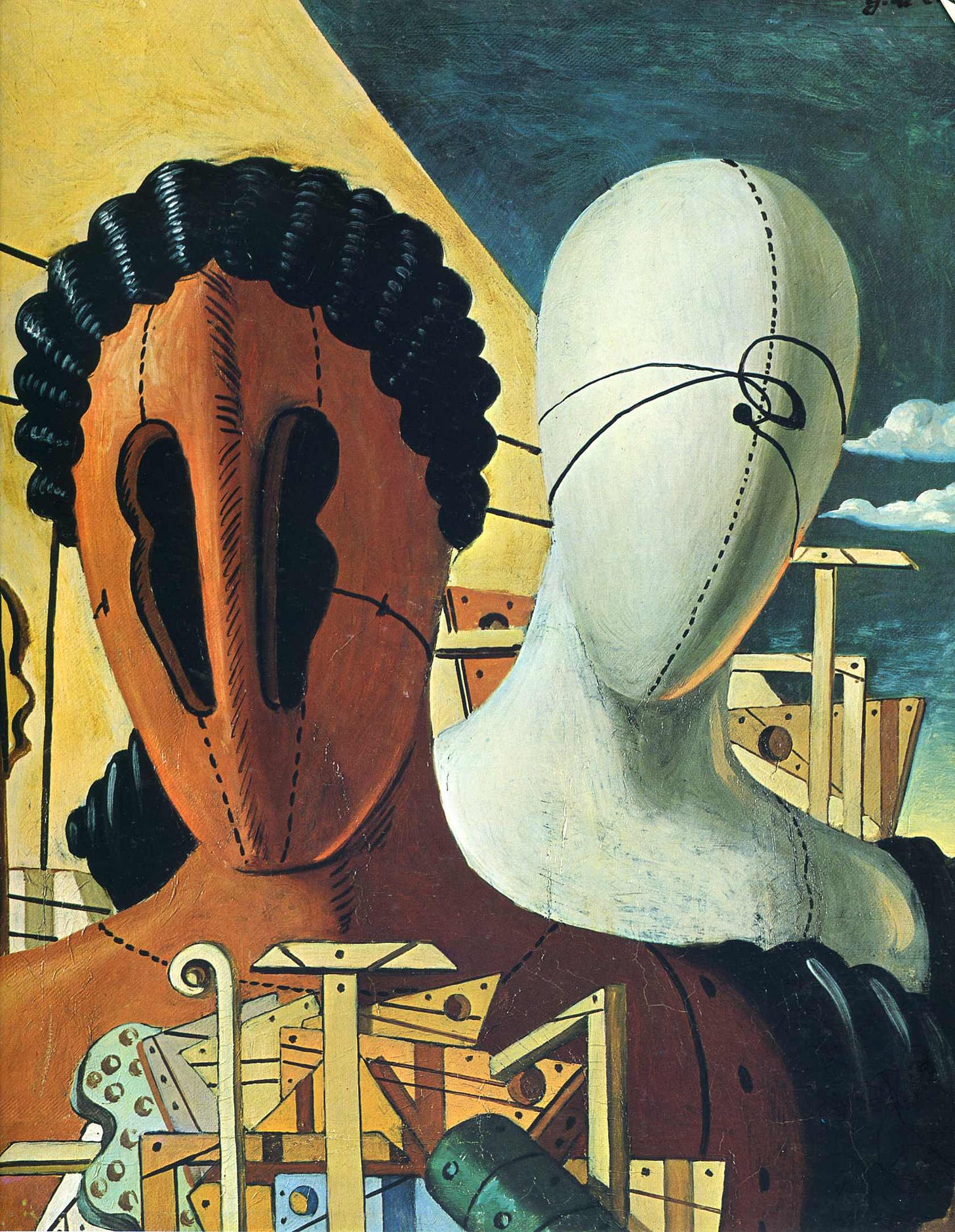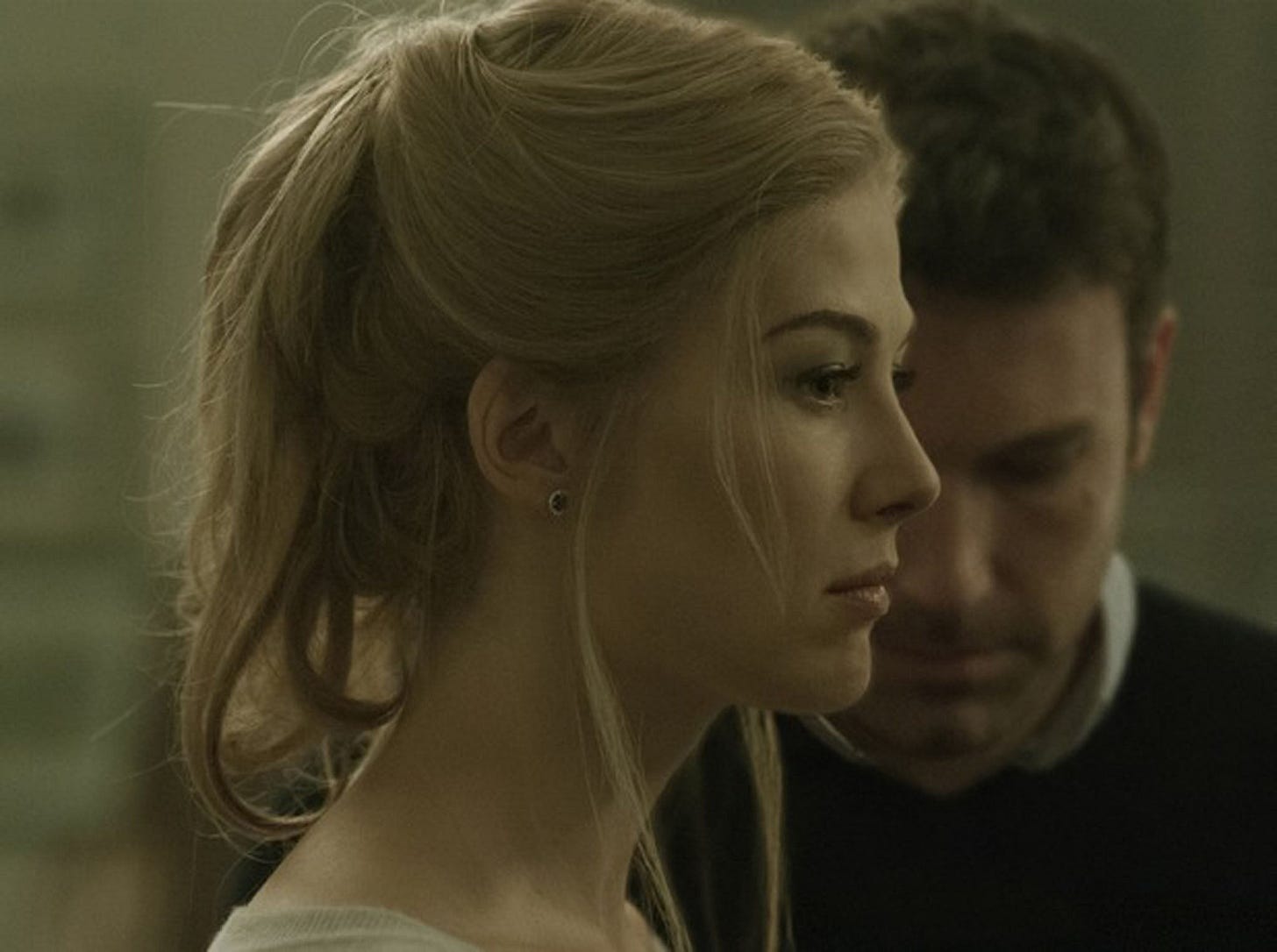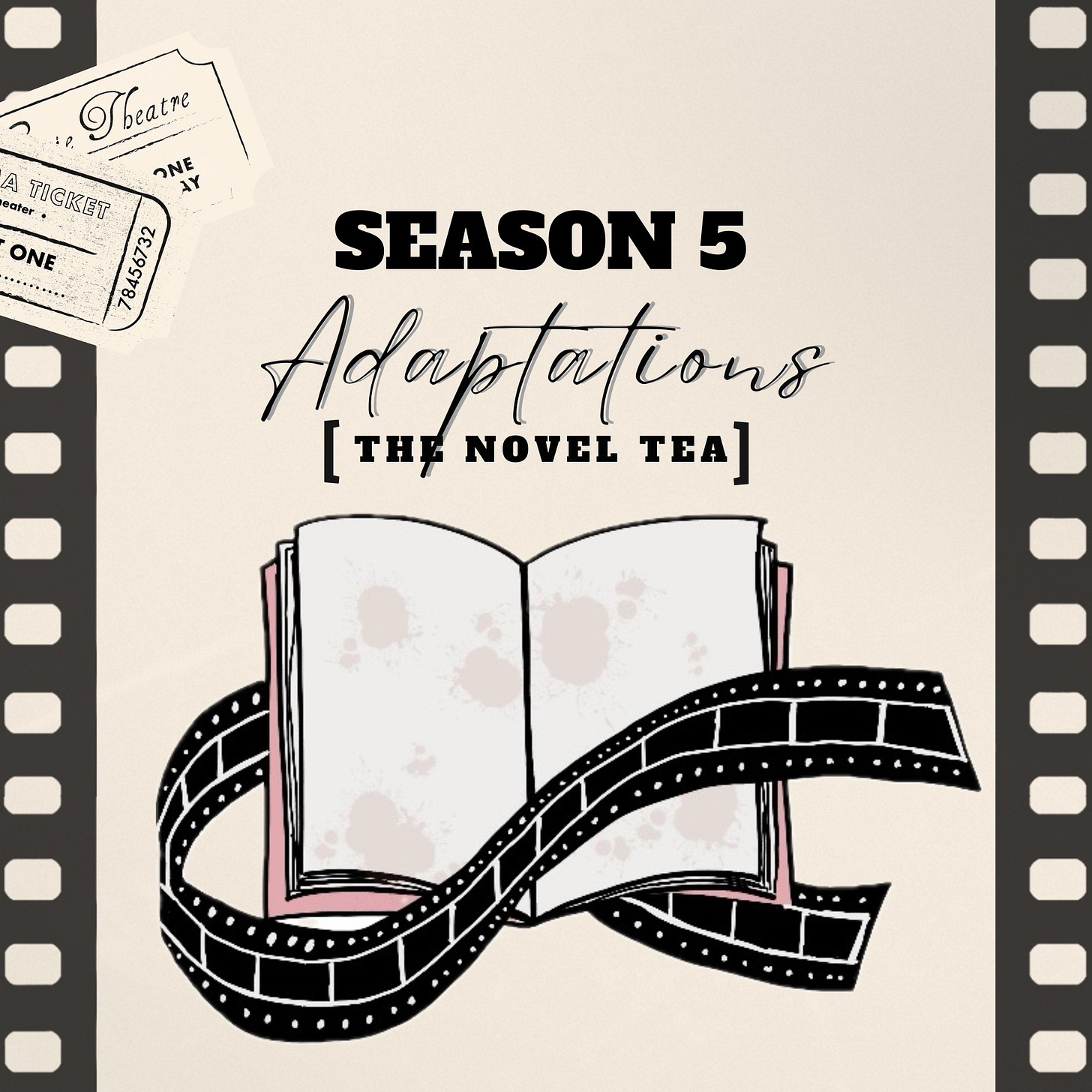Double, Double, Foil and Trouble: Doppelgangers in Literature
Analyzing doubles and duplicated selves, plus our Season 5 theme announcement!
As I sit down to write this newsletter, I see, in my computer screen, behind all the words and buttons, a dim yet ever-present echo of myself — a reflection, a mirroring of my face. The eyes, at once foreign and familiar, stare back at me, daring me to respond.
I am doubled; duplicated by the shiny object in front of me — and as I stare past myself, resisting the urge to dwell on my features, I wonder about doppelgangers: who they are, what they represent, and what they can tell us.
*This essay discusses: Jane Eyre, The Likeness, The Scapegoat, and Gone Girl in some detail. There are no major spoilers (except maybe for Jane Eyre), though I will make reference to certain themes in the discussion.
I am currently rereading Jane Eyre, and as I turn the pages, I am cognizant of the theory that Bertha Mason represents Jane’s repressed consciousness, her alter ego.1 I know this theory only vaguely, and though I enjoy thinking through it, I don’t wholeheartedly subscribe to it, either. Jane and Bertha are too dissimilar, their circumstances entirely opposite, for me to fully buy in to them as doubles of one another. There is more at play.

But the idea of doubles is a Gothic one. The doppelganger first appeared in novels in the late 18th century, encouraged in part by a renewed interest in Celtic and pagan mythology, which are replete with supernatural double figures. Possibly, the idea took an even deeper hold in the 18th century as evil was no longer associated with physical locations, but became an innate characteristic that one had to grapple with; in these novels the psychological burden was far greater than the physical one.
Other Gothic works that I love which use this motif include Rebecca and The Yellow Wallpaper. Both stories allude to a repressed (or oppressed) self and contain explicit reference to windows or mirrors (by the way, how are the window and the mirror related when it comes to doubles? I am so intrigued by these two structures — perhaps an exploration for a future newsletter).
But as we have moved from the 18th and 19th centuries into the 20th and 21st centuries, our ideas of psychology, appearances, and identity have changed. What are doubles in literature telling us now?
I think, first, to books in which the physical appearance between two characters is uncannily similar. In Tana French’s The Likeness, Cassie, a detective, comes across a case unlike any she has encountered before. It is one in which the victim is an exact replica of herself.
“I knew her from somewhere, I’d seem that face a million times before. Then I took a step forwards, so I could get a proper look and the whole world went silent, frozen, darkness roaring in from the edges and only the girl’s face blazing white at the center; because it was me. The tilt of the nose, the wide sweep of the eyebrows, every tiniest curve and angle clear as ice: it was me, blue-lipped and still, with shadows like dark bruises under my eyes. I couldn’t feel my hands, my feet, couldn’t feel myself breathing.”
— The Likeness, Tana French (emphasis my own)
This fact of their physical resemblance allows Cassie to pretend to be the murdered girl, Lexie Madison, and uncover things that an outsider never could. As Cassie begins to inhabit Lexie’s life, she begins to become more like her — to enjoy the things that Lexie liked, to feel affection towards the people that Lexie loved.
What makes the case even more eerie is the fact that the name Lexie Madison was an alter ego that Cassie, and her former boss, Frank, invented when she was working undercover many years ago.
“I kept wanting to laugh, just at the lavish giddy freedom of it: relatives and countries and possibilities spread out in front of me and I could pick whatever I wanted, I could grow up in a palace in Bhutan with seventeen brothers and sisters and a personal chauffeur if I felt like it.”
— The Likeness, Tana French
And as they dream up a life for her alter ego, her imagination runs wild, letting her conjure up images that exist outside of her regular life.
The book suggests that an outward similarity allows one to discover deep differences and truths that might not be apparent to someone who didn’t look like them. Those who share an outward similarity share some kind of deep connection, too (there is a whole other related but separate discussion to be had about twins, which I won’t include here).
This idea of living someone else’s life also comes up in The Scapegoat, by Daphne du Maurier. The novel follows a lonely English man, John, who, when on holiday in France, happens to run into a man who looks exactly like him.
“Someone jolted my elbow as I drank and said, "Je vous demande pardon" - and as I moved to give him space, he turned, and stared at me, and I at him. And I realized with a strange sense of shock and fear and nausea all combined, that his face and voice were known to me too well. I was looking at myself.”
— The Scapegoat, Daphne du Maurier (emphasis my own)
After a long night, our narrator wakes up to find that his drinking buddy, Jean, has vanished, and everyone now believes that he is Jean. After some initial resistance, he decides to return to Jean’s home, having assumed Jean’s identity, and live his life as someone else.
John begins to learn secrets about Jean’s family, deceiving them all, all the while wondering why on earth he is still participating in this charade.
“…I was above suspicion. No spy in the service of his country had ever been given such a disguise, such an opportunity for probing the frailty of others, if that was what I wanted. What did I want?”
— The Scapegoat, Daphne du Maurier
The story asks us: if you could change your life overnight, would you do it? It asks us to consider the idea of a ‘double life,’ while exploring appearances, desires, and reality (was there ever a separate John and Jean to begin with? Or were they the same person?)
And of course, one of the most famous examples of doubles from the 21st century comes up in Gone Girl. Various forms of doubles revolve around Amy, the heroine of the novel: Hilary Handy, a childhood classmate, fashions herself after Amy, imitating her style of dress and behavior; an ex-boyfriend’s mother looks to Nick (Amy’s husband) like an older version of Amy; and Amy herself seems to require duplicates of everything:
“Amy made doubles of everything -- I tended to misplace keys, credit cards, cell phones.”
— Gone Girl, Gillian Flynn

Gone Girl goes beyond outward appearances to explore the idea of double lives. It cites our current century, our lifestyles, and our past times as just a few ways things are doubled — that is to say, according to Nick, not firsthand. And the idea of something not being novel, or original to him, is frightening — because if we did not experience something ourselves, then who are we?
“I can't recall a single amazing thing I have seen firsthand that I didn't immediately reference to a movie or TV show. A fucking commercial. You know the awful singsong of the blasé: Seeeen it. I've literally seen it all, and the worst thing is, the thing that makes me want to blow my brains out, is: The secondhand experience is always better. The image is crisper, the view is keener, the camera angle and the soundtrack manipulate my emotions in a way reality can't anymore. I don't know that we are actually human at this point, those of us who are like most of us, who grew up with TV and movies and now the Internet. If we are betrayed, we know the words to say; when a loved one dies, we know the words to say. If we want to play the stud or the smart-ass or the fool, we know the words to say. We are all working from the same dog-eared script.”
— Gone Girl, Gillian Flynn (emphasis my own)
Ultimately the book explores, in a multitude of ways, the idea of a fake, sometimes superficial reality — one that is manufactured and crafted — in contrast to a true reality. Who are we? How do we present ourselves to the world, and how is this different than who we truly are? Does one need to look and behave in a way that is original in order to be real?
If you haven’t read the book yet, I won’t spoil anything, except to say that the ending brings all of these questions into an even harsher focus.
There are countless other books that explore these ideas of doppelgangers and identity — The White Castle by Orhan Pamuk sits on my bookshelf in front of me. It follows an Italian scholar who is taken prisoner by the Ottoman Empire in the 17th century, only to discover that the man whose slave he has become looks just like him. I had hoped to read this book, too, in preparation for this newsletter, but alas, life had other plans for me.
There is so much more to explore with these ideas: how can we relate shadows to doubles — do they perform similar functions? Is the doubled self just another representation of the soul? Do doppelgangers exist in real life, or do they only exist in literature and thought experiments?
Anyways, here are some resources tiding me over as I think through these questions:
Double, Double: On the Unsettling Power of Doppelganger Stories [Lithub]
A list of books about doubles and second selves
Now I’d love to hear from you: What are your favorite books featuring doubles and doppelgangers? What questions do they pose, and have you puzzled out any answers?
— Shruti
Our Season 5 Theme Announcement
Next week, we’ll be back on the main podcast feed with a brand new season. We are so excited about this one, and we think you will be too! Tune in on January 29 to hear a more in-depth exploration of our theme, and all the books (and other media) we’ll be discussing this season!
While you’re waiting, you can catch up on prior seasons including: The American Dream, Around the World in 8-Tea Books, Other Worlds, and Beyond Borders.
In fact, you might even argue that they are foils of each other (ok, yes, I understand that I’m not totally using this term correctly, but Jane Eyre does contain foils and contrasts in the characters of Jane, Bertha, and Blanche Ingram. Also, I really wanted to incorporate it into my clever title)





